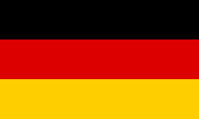
Ruhr-Universität Bochum
Feststoffverfahrenstechnik
IC 3-51/55
Universitätsstraße 150
44801 Bochum
Ulrike Harnickell
Gebäude IC 3 Raum 51/55
+49 (0) 234 32-26685
sek@fvt.rub.de

We are fascinated by gases at high pressures and use their properties to develop innovative processes and products. The following list provides an overview of current and previous research projects:
In order to achieve the climate targets, research is being carried out into the substitution of fossil resources in process chemistry. One approach is the electrochemical reaction of water with carbon dioxide. The anode compartment, in which the water is oxidized, and the cathode compartment, in which the carbon dioxide is reduced, are separated from each other by a membrane. The aim is for the reaction to mainly produce ethanol at the cathode (…).
Geothermal energy makes an important contribution to climate-friendly electricity and heat generation worldwide. To provide heat for buildings or generate electricity, geothermal energy extracts heat from the ground. Geothermal energy is base-load capable and independent of wind, tides and sun. (IRENA and IGA 2023; Stober and Bucher 2020)
A key operational challenge in the use of geothermal energy is often limited flow rates. These reduce heat transfer, which reduces the efficiency of geothermal systems. A common cause of limited flow rates are deposits (scales) of minerals and microparticles as well as corrosion in the pipes and system components. Complex cleaning and maintenance work is required to prevent a drop in the system’s performance, which results in high costs. (van Pull-Verboom 2020; Stober and Bucher 2020) (…).
Waterjet cutting is a proven industrial manufacturing process for processing various materials. In this process, the cutting medium is compressed to a pressure of several thousand bar before being expanded through a nozzle to atmospheric conditions to create a jet. Other liquids can also be used as a cutting medium instead of water. By using liquid carbon dioxide (CO2) instead of water, residue-free and dry processing of water-sensitive materials can be made possible, as the carbon dioxide evaporates completely after hitting the workpiece. (…).
Curbing further global warming is probably the greatest challenge currently facing mankind. To achieve this, greenhouse gas emissions must be drastically reduced. These greenhouse gases are released when fuels, chemicals and plastics are obtained from fossil raw materials in the same way as before.
If this is to be avoided, the carbon cycles of these products must be closed with the help of modern technologies. These are summarized under the generic term “Carbon Capture and Utilization” (CCU). These innovative processes use captured CO2 from industrial emissions as a raw material and renewable energy sources to produce fuels, chemicals or plastics from the CO2. In the future, CO2 will also be extracted directly from natural sources to create a more sustainable industry (…).
In the food industry, flavorings are often encapsulated to improve shelf life and dosage. Spent yeast cells, which are a waste product from breweries, are a particularly inexpensive and sustainable encapsulation material. If these are extracted after brewing to produce yeast extract, encapsulation even represents a tertiary use. On this basis, bio-based controlled release systems can be produced in a resource-saving manner and free of additives. (…).
Extrusion lines are used for the continuous processing of malleable substances, for example polymers. The best-known extrusion lines include single and twin-screw extruders. Planetary roller extruders (PWE) are a special design and belong to the multi-screw extruders. The design of the PWE is similar to a planetary gear with a centrally arranged central spindle, rotating planetary spindles and a stationary roller cylinder (see Figure 1). The PWE is suitable for a variety of applications due to the various adjustable spindle configurations, precise temperature control and high mixing quality [Kohlgrüber 2019]. For example, the Virtualization of Process Engineering Processes working group at Ruhr University Bochum has succeeded in producing polymer foams with the PWE using compressed carbon dioxide [Winck 2020]. (…).
